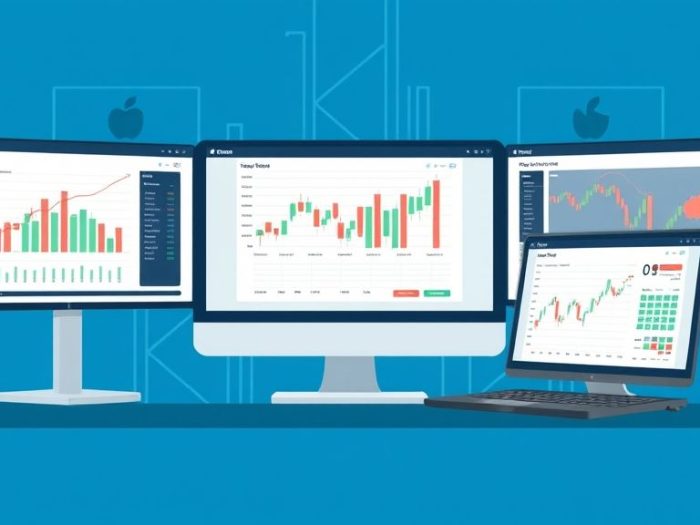Backtesting is a crucial practice for traders and investors to evaluate the
effectiveness of their strategies before risking real capital. By simulating
trading strategies on historical data, backtesting platforms provide valuable
insights into potential profitability, risk, and drawdown. This article explores
the best backtesting platforms for both stock and options strategies, helping you
make informed trading decisions.
Understanding Backtesting
Backtesting involves applying a set of rules or a trading strategy to historical
market data to simulate how it would have performed in the past. This process
allows traders to:
-
Validate Strategies: Determine if a strategy has the potential
to be profitable. -
Optimize Parameters: Fine-tune strategy parameters for better
performance. - Assess Risk: Evaluate potential drawdowns and risk exposure.
-
Gain Confidence: Build confidence in a strategy before trading
live.
Key Features of Backtesting Platforms
Effective backtesting platforms offer these essential features:
-
Historical Data: Access to reliable and comprehensive historical
price and volume data. -
Strategy Customization: Ability to define custom trading rules
and conditions. -
Realistic Simulation: Accurate modeling of market conditions,
including slippage and commissions. -
Performance Metrics: Detailed reporting of key performance
metrics (e.g., win rate, profit factor, drawdown). -
Options Support: For options backtesting, the platform should
support options pricing models and various options strategies.
Best Backtesting Platforms
1. TradingView
TradingView is renowned for its charting capabilities, and its backtesting features
are also strong, especially for stocks.
-
Strengths:
- User-friendly interface
- Pine Script for custom strategies
- Extensive historical data
- Large community for sharing ideas
-
Best For:
- Stock trading
- Simple to complex strategy development
-
Limitations:
- Options backtesting is limited.
2. Thinkorswim (TD Ameritrade)
Thinkorswim is a powerful platform from TD Ameritrade that offers robust
backtesting for both stocks and options.
-
Strengths:
- Comprehensive options data
- Advanced options strategy testing
- Highly customizable platform
- Paper trading for live simulation
-
Best For:
- Options trading
- Complex strategy development
-
Limitations:
- Steeper learning curve
3. MetaTrader 5
MetaTrader 5 is a popular platform primarily used for forex and CFD trading but
also supports stock backtesting.
-
Strengths:
- MQL5 programming language for strategy development
- Automated trading capabilities
- Wide range of indicators
-
Best For:
- Algorithmic trading
- Forex and stock strategies
-
Limitations:
- Options backtesting is generally not supported.
4. Interactive Brokers Trader Workstation (TWS)
Interactive Brokers’ TWS platform provides backtesting features, particularly for
stocks, integrated into its trading platform.
-
Strengths:
- Direct access to global markets
- Low trading costs
- API for custom development
-
Best For:
- Active traders
- International markets
-
Limitations:
- Options backtesting can be less user-friendly than Thinkorswim.
5. Python Libraries (e.g., Backtrader)
For advanced users, Python libraries like Backtrader and QuantConnect offer
powerful backtesting capabilities.
-
Strengths:
- Highly customizable
- Flexible and powerful
- Access to a vast ecosystem of Python libraries
-
Best For:
- Quantitative traders
- Complex strategy development
-
Limitations:
- Requires programming skills
- Steeper learning curve
Choosing the Right Platform
The best backtesting platform depends on your:
- Asset Class: Stocks, options, or both.
- Strategy Complexity: Simple or complex trading rules.
- Programming Skills: Ability to code custom strategies.
- Budget: Platform costs and data fees.
Conclusion
Backtesting is essential for developing and validating trading strategies. By
choosing the right platform for your needs, you can gain valuable insights into
your strategy’s potential performance and risk. Carefully consider your asset
class, strategy complexity, and technical skills when selecting a backtesting
platform.
Related Keywords
Best backtesting platforms, stock backtesting, options backtesting, trading
strategy backtesting, backtesting software, TradingView backtesting, Thinkorswim
backtesting, MetaTrader 5 backtesting, Python backtesting, backtesting tutorial.
Frequently Asked Questions (FAQ)
1. What is backtesting?
Backtesting is the process of testing a trading strategy on historical data to
simulate its performance in the past.
2. Why is backtesting important?
Backtesting helps traders validate strategies, optimize parameters, assess risk,
and gain confidence before trading live.
3. What are the key features of a good backtesting platform?
Key features include access to historical data, strategy customization,
realistic simulation, performance metrics, and options support (if needed).
4. What are some of the best backtesting platforms?
Some of the best platforms include TradingView, Thinkorswim, MetaTrader 5,
Interactive Brokers TWS, and Python libraries like Backtrader.
5. What are the strengths of TradingView for backtesting?
TradingView offers a user-friendly interface, Pine Script for custom
strategies, and extensive historical data, making it suitable for stock trading.
6. Why is Thinkorswim good for options backtesting?
Thinkorswim provides comprehensive options data, advanced options strategy
testing capabilities, and a highly customizable platform.
7. What is MetaTrader 5 best suited for?
MetaTrader 5 is best suited for algorithmic trading and strategies involving
forex and stocks, offering MQL5 programming and automated trading features.
8. What are the advantages of Interactive Brokers TWS?
Interactive Brokers TWS provides access to global markets, low trading costs,
and an API for custom development, making it suitable for active traders.
9. When should I use Python libraries for backtesting?
Python libraries like Backtrader are ideal for quantitative traders and those
developing complex strategies, offering high customization and flexibility.
10. How do I choose the right backtesting platform?
Consider your asset class, strategy complexity, programming skills, and budget
when choosing a backtesting platform.



